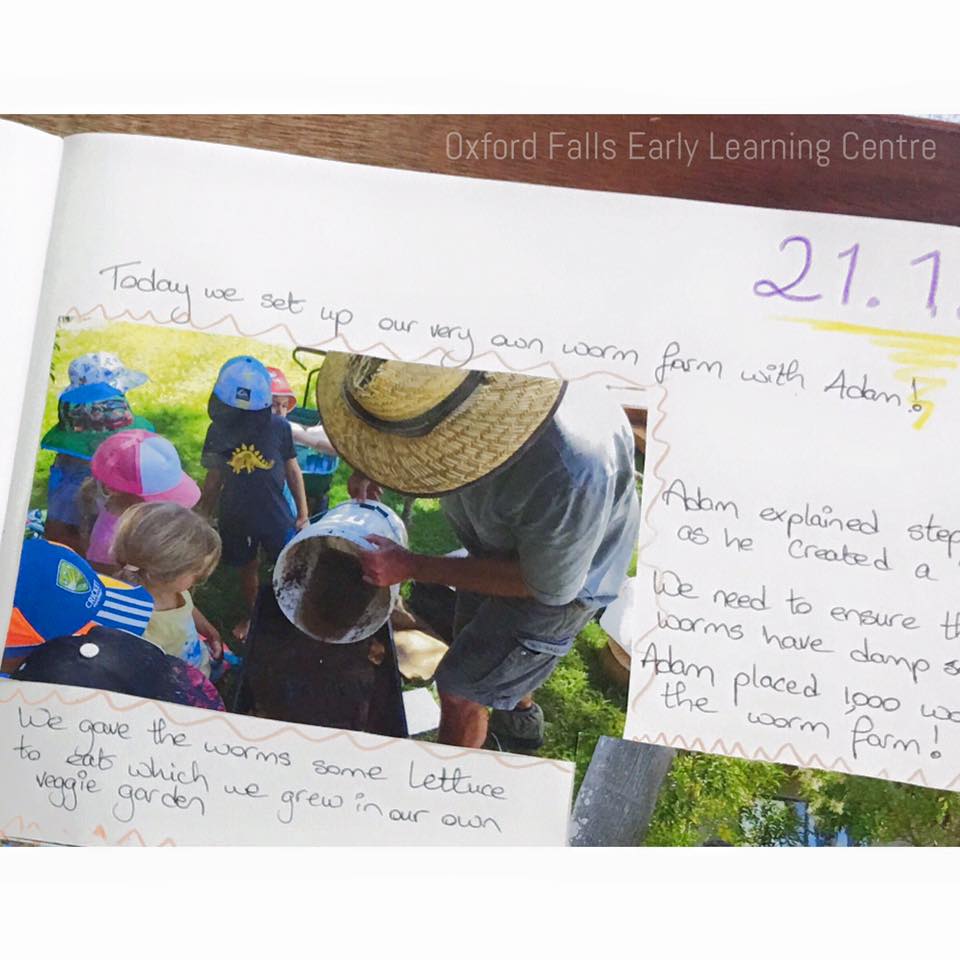Today we welcomed the newest members of the Oxford Falls ELC family… 1,000 live earthworms! That’s right, we now have a worm form that the kids can love, nurture, and get messy in. It’s a great tool that lets kids of all ages observe the worms as they go about their amazing daily business. A great opportunity to learn more about a worm’s importance in our ecosystem. A worm’s burrowing action and feeding habits (worm composting) enriches the soil and helps plants grow healthy and strong. Our Worm Farm will allows the kids to see right into the wonderful world of worms, a world that is usually hidden in the secret depths of the undergrowth, making learning so much more fun!
So, why did we want to start a worm farm?Worm farming allows us to recycle our food scraps and significantly reduce the amount of organic waste sent to landfill as part of our everyday rubbish. By reducing organic waste to landfill we can reduce the potential for landfills to create liquid ‘leachate’ which can pollute our streams, oceans and underground water, and reduce the production of methane gas which is a powerful greenhouse gas. A worm farm produces vermicast, a soil-like material, and a ‘juice’ which are both nutrient rich and make ideal natural fertilisers to improve the health of the plants in your garden. Establishing and maintaining a worm farm is great fun and an excellent way to educate children about our natural world while touching on a myriad of topics including maths, spelling (hermaphrodite), art, biology and soil chemistry. In addition, managing a worm farm may also provide the children with a sense of responsibility both for their own actions and the world we live in.
Want to know more about worms?
• Worms are soil makers and are a key part of healthy soils. Looking after the worm communities in our worm farm assists us to improve the soils in our gardens and to encourage a healthy natural population of worms in this environment.
• Worms eat organic matter and turn it into vermicast, a type of humus – the richest and most important part of all soils.
• Vermicast has a high level of microbial activity, and when added to soil, increases the microbial activity of the soil. This assists plants to strengthen their immune systems.
• Worms in our soils dig holes that allow the rainwater to move deeper into the soil, down where the roots of plants are, ensuring water is getting to the place it is needed most.
• Worm holes allow soils to breathe ensuring plants are healthy and vibrant.
• Worms increase the water holding capacity of the soil.
• Worms increase the amount of minerals available to plants in the soil.
• A worm has no eyes, legs or arms.
• There are 2700 different types of earthworms in the world.
• There can be up to 1 MILLION earthworms in just 1 acre of land.
• 22 foot long earthworm was found in South Africa.
• Worms help plants by mixing the soil. So gardeners love them because they are ‘free’ help!
• The sticky slime a worm makes helps keep it from drying out. If the worm dries out, it will die, because it ‘breathes’ through it’s skin.
• Earthworms can replace lost parts. Some types are better at this than others.
• Baby worms hatch from a cocoon. You can read about the life cycle here.
• A single worm has both male and female parts. This is called a ‘hermaphrodite.’ But they still need a mate to reproduce.
• EEven without eyes, a worm can still sense light and will move away from it.
• Earthworms come to the surface when it rains because they need oxygen to breathe, and they would drown if they stayed in the soil.
• Some of the largest worms can live to be 50 years old.
• Regular earthworm can live 15 years.
• Some people eat earthworms, like some people in China and New Zealand.
• Worms use a gizzard to grind up food instead of teeth.
• Vermicomposting is the treatment of wastes, like kitchen scraps, using worms.
• A worm chopped in half will not become 2 worms. Just the head end will regenerate into a new worm.
• Worms can have up to 5 hearts depending on the type of worm it is.
There you have it. The wonderful world of worms. We know the kids will love them and they’re sure to get a lot out of having the worms in the family.



























No Comments